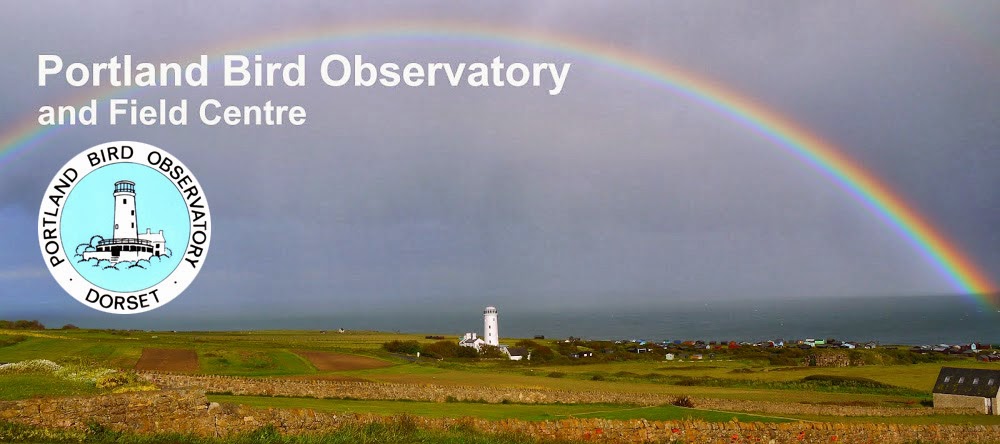A gradual decline in the strength of the prevailing easterly was very welcome and there were signs of a little bit of an input of quality into the day's migrant proceedings. In view of events on the East Coast there had been some expectation of Honey Buzzards putting in an appearance, and the first duly appeared over the centre of the island during the morning; another fly-over Ortolan Bunting and the third Great Spotted Woodpecker of recent days were the best on offer at the Bill, whilst 2 Little Stints at Ferrybridge and a Ring Ouzel at Penn's Weare topped the list of less frequent migrants elsewhere. Passage overhead - still dominated by Swallows and Meadow Pipits, but with House Martins beginning to feature more strongly - continued apace, whilst on the ground it was Robins that were dominant, with getting on for 100 at the Bill alone.
Immigrant moths caught overnight at the Obs included 6 Diamond-back Moth, 2 Rusty-dot Pearl and singles of Oak Hook-tip, Convolvulus Hawk and Silver Y.
Ring Ouzel - Penn's Weare, 15th September 2014 © Roger Hewitt
...and thanks to James Phillips for a Whinchat and a Short-eared Owl from the Bill yesterday:
And since we're always keen on drawing attention to the wealth of other specials amongst the Portland flora and fauna, thanks to Mark Telfer for showing us the British Whorl Snail Truncatellina callicratis (photo © Mark Telfer):
...the tiny callicratis is found in only 15 10km squares along the South Coast between East Devon and the Isle of Wight, with Ferrybridge perhaps the best known site for it. Next time you go trudging over the grass there en route to do a seawatch off Chesil spare a thought for the likes of callicratis or the even rarer (its only UK site) beetle Omophlus betulae - crippling rares that are literally under your feet!
Finally, we'll venture into a topic that we're really struggling with - Lesser Whitethroats. Take a look at this one that we really only bothered to photograph (at the Obs over the weekend) because we thought we ought to try and learn more about 'our' Lesser Whitethroats in readiness for the more interesting ones that might come later in the autumn:
...it looks to be a perfectly OK British curruca in the photo above, but with a quick change of the camera white balance setting (auto setting in the photo above, shade setting in the photo below; the photo was taken in shade on a dreary day so perhaps the shade setting was the more appropriate) it suddenly looks a fair bit more interesting:
On wing-formula it certainly wasn't a standard curruca: the 2nd primary fell between the 6th and 7th (thus more like blythi Siberian Lesser Whitethroat), when it ought to have fallen between the 5th and 6th:
The tail pattern wasn't really any help:
So now we know less about how to identify Lesser Whitethroats than we thought we knew before! (photos © Martin Cade)


















































